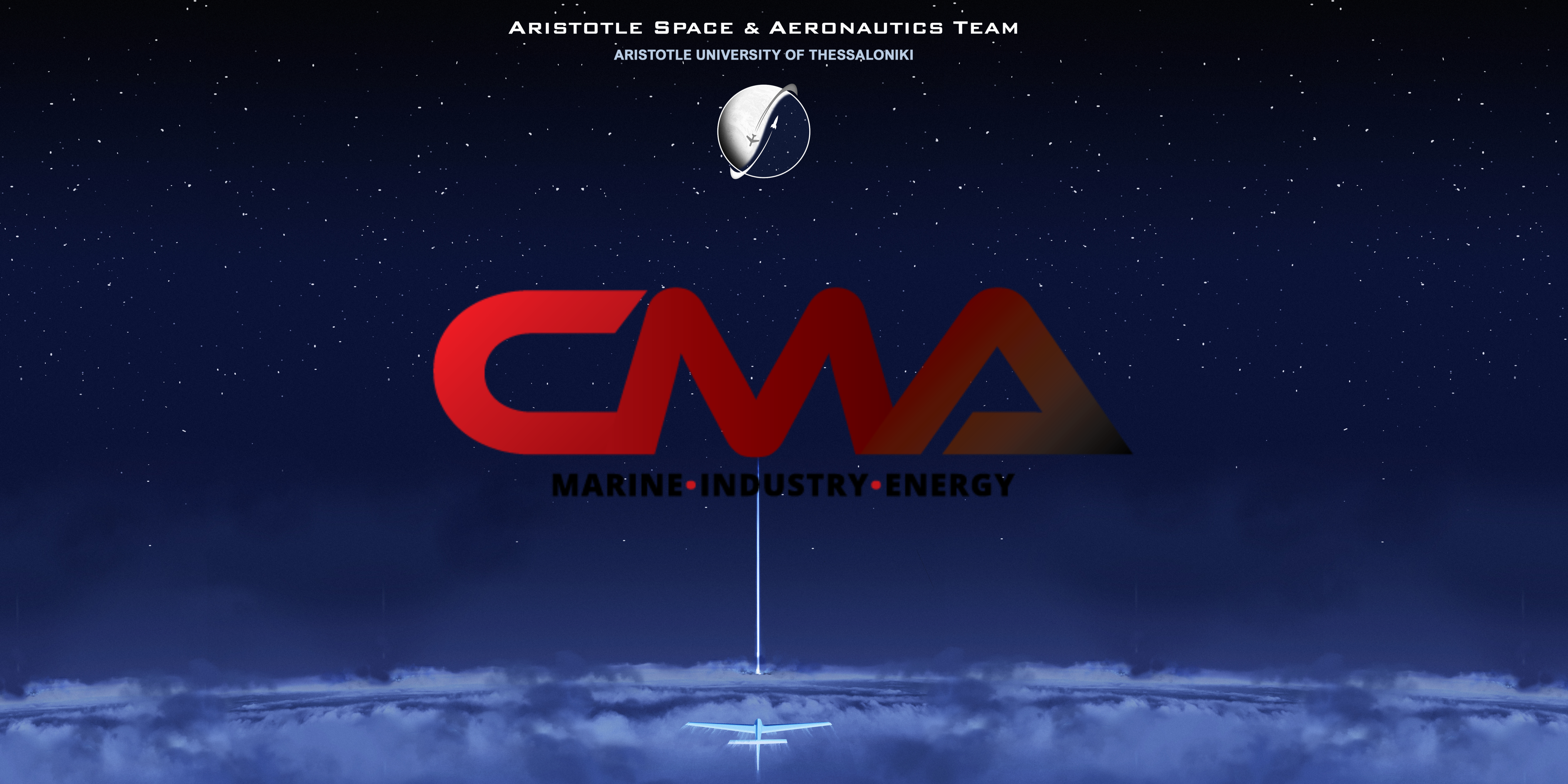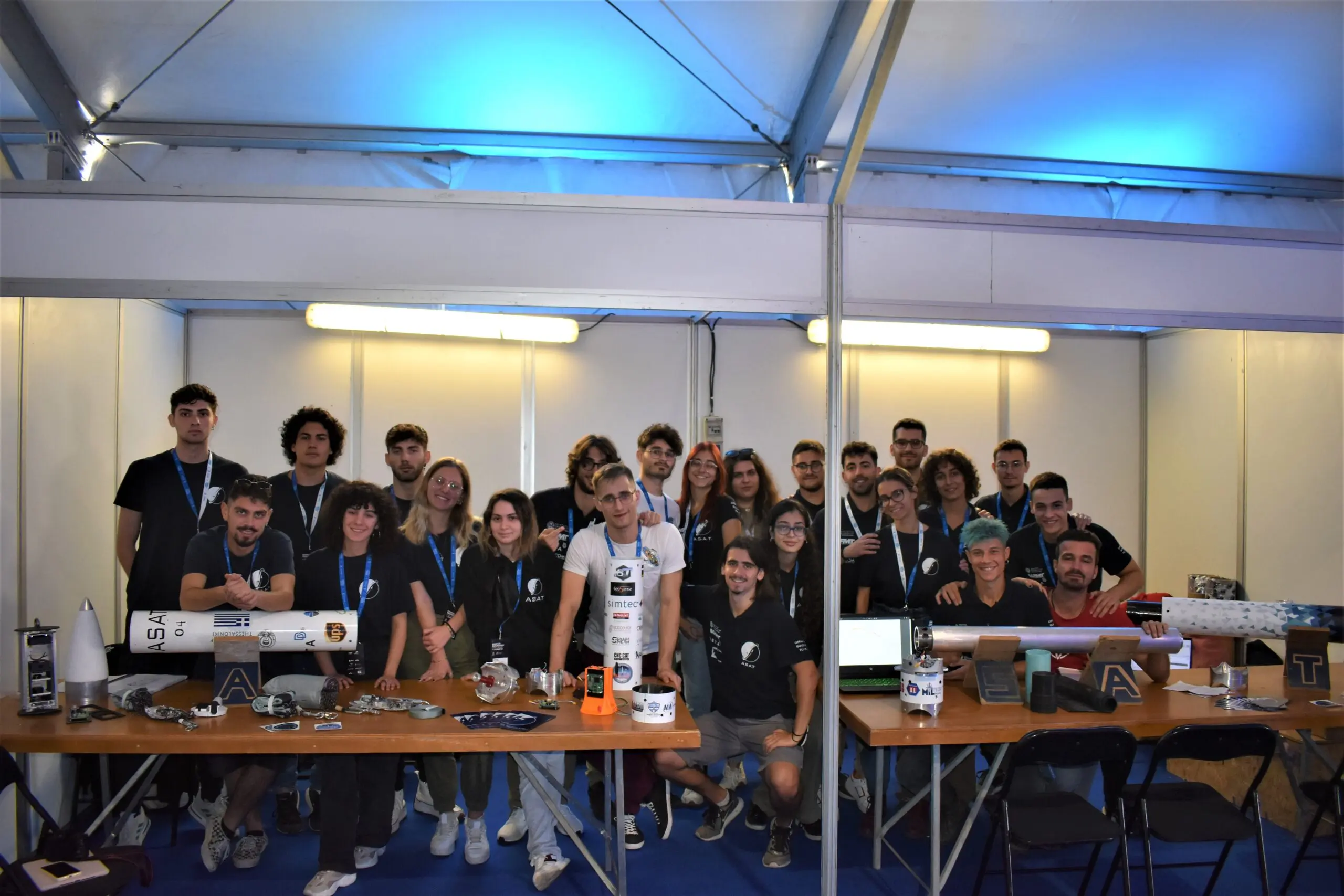Recovery Subsystem
The recovery sub-team is responsible for the dimensioning and construction of the rocket’s parachutes, as well as the design and manufacturing of two ejection mechanisms.
Most high-power rockets need two parachutes for their recovery. The first one is called drogue parachute and it produces the initial deceleration, whereas the second one, the main parachute helps the rocket achieve its desired ground-hit velocity.
Before designing the parachutes, a specific research needs to be conducted in order to select the right materials, the fabric (ripstop nylon), the thread (nylon) and the paracords (nylon).

The main process for the design and manufacture of a parachute begins with the
calculation of its diameter (d) and its drag coefficient (Cd). What also has to be known, is the exact mass (M) of the rocket after the engine’s fuel has burned out. For the drogue chute we need to know the speed of the rocket (v) the moment the it is deployed and for the main parachute, we need to know the rocket’s desired ground-hit velocity. These parameters can be easily found with the help of a program called Open Rocket, which is a flight simulation program. The diameter of the parachute can be calculated with the help of specific bibliography.
Next is the design of 8 identical pieces, which are like equilateral triangles, then they are cut using a pattern, which is designed using specific equations. The manufacture of the pattern includes a laser-cut. Then, the pieces are hemmed with a sewing machine and afterwards they are sewed together, using a specific type of sewing (zig-zag).
The next step is the cut of a center hole, which has a radius that is 20% of the parachute’s radius and makes the rocket more stable. Then, 8 cords are sewed on the fabric, which have a length that is 1.15 times the parachute’s diameter. In general, the part of the cords that is sewed on the fabric has a length of 5% to 10% of the cord’s whole length.

The recovery sub-team have developed two mechanisms. The first one is the ejection
mechanism that frees the nosecone and deploys the drogue parachute. Its casing is a
metal cylinder with four small holes and two caps for both ends. In the casing the members place a small cannister with a small amount of Black Powder (BP), which is connected with two wires, that are also connected with the electronics’ bay of the rocket. This is the part of the rocket that gives the signal to ignite the ejection. Once the BP is burnt, it produces gasses, that escape with great pressure in the Recovery bay, thus pushing the nosecone out of the rocket, and the drogue parachute with it.
The procedure towards designing the mechanism requires knowing exactly how big the recovery bay is, as well as how much the nosecone weighs. Then, the dimensions of the casing, the four holes, as well as the approximate amount of Black Powder needed for the ejection mechanism to work, are calculated with equations.

The second mechanism is called tender descender, and it deploys the main parachute at the right moment. It consists of two metal parts, one of which is tied with the drogue parachute and the main parachute’s case, whereas the other one is tied with the rocket. These two parts fit together and create a place to put a small amount of Black Powder, which, again, is connected with two wires that are also connected with the electronics’ bay of the rocket, where the signal to burn the Black Powder is given, and then divide the two parts of the tender descender. So, the drogue parachute draws the main parachute’s case, thus deploying the main parachute.
After the design and manufacturing of both mechanisms, many experiments are needed, in order to make sure that they work, and to decide on the perfect amount of BP.
More specifically, Hyperion’s main parachute has a diameter of 2.9m, whereas its drogue chute 0.8m. The Recovery bay is 50cm long and has an inner diameter of 125mm (as does the whole rocket). The ejection mechanism’s casing is 5cm long and has a diameter of 22mm.





